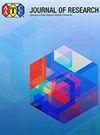Forecasting the Impact of the COVID-19 Outbreak on China’s Cotton Exports by Modified Discrete Grey Model with Limited Data
IF 1.2
4区 工程技术
Q4 MATERIALS SCIENCE, TEXTILES
引用次数: 3
Abstract
The sudden outbreak of COVID-19 has created dramatic challenges for public health and textile export trade worldwide. Such abrupt changes are difficult to predict due to the inherently high complexity and nonlinearity, especially with limited data. This article proposes a novel modified discrete grey model with weakening buffer operators, called BODGM (1,1), for forecasting the impact of pandemic-induced uncertainty on the volatility of cotton exports in China under limited samples. First, the Mann–Kendall test examines how pandemic-induced uncertainty affects cotton exports, based on China’s monthly cotton export data from June 2014 to August 2022. Second, buffer operators are employed to weaken the nonlinear trends and correct the tentative predictions of the discrete grey model. Then, the BODGM (1,1) model was validated by comparison with four alternative models. The results indicate that the BODGM (1,1) model was particularly promising for identifying mutational fluctuations in cotton exports and outperformed the GM (1,1), DGM (1,1), ARIMA and linear regression models in fitting and prediction accuracy under volatility and limited data. The BODGM (1,1) model forecast results for China showed that cotton export volume was expected to show signs of recovery over the next 12 months. The findings of this study may provide a basis for formulating trade policies to mitigate the impact of the COVID-19 outbreak on export resources and build their resilience to future pandemics.基于有限数据修正离散灰色模型预测新冠肺炎疫情对中国棉花出口的影响
2019冠状病毒病的突然爆发给全球公共卫生和纺织品出口贸易带来了巨大挑战。由于固有的高复杂性和非线性,特别是在有限的数据下,这种突变难以预测。本文提出了一种新的带有弱化缓冲算子的修正离散灰色模型,称为BODGM(1,1),用于在有限样本下预测大流行引起的不确定性对中国棉花出口波动的影响。首先,基于2014年6月至2022年8月中国月度棉花出口数据,Mann-Kendall检验检验了大流行引发的不确定性如何影响棉花出口。其次,采用缓冲算子来减弱非线性趋势,并对离散灰色模型的暂定预测进行修正。然后,将BODGM(1,1)模型与4个备选模型进行对比验证。结果表明,BODGM(1,1)模型在识别棉花出口突变波动方面尤其有前景,在波动性和有限数据下的拟合和预测精度优于GM(1,1)、DGM(1,1)、ARIMA和线性回归模型。BODGM(1,1)模型对中国的预测结果显示,预计未来12个月棉花出口量将出现复苏迹象。本研究结果可为制定贸易政策提供依据,以减轻新冠肺炎疫情对出口资源的影响,并增强出口资源对未来大流行的抵御能力。
本文章由计算机程序翻译,如有差异,请以英文原文为准。
求助全文
约1分钟内获得全文
求助全文
来源期刊

AATCC Journal of Research
MATERIALS SCIENCE, TEXTILES-
CiteScore
1.30
自引率
0.00%
发文量
34
期刊介绍:
AATCC Journal of Research. This textile research journal has a broad scope: from advanced materials, fibers, and textile and polymer chemistry, to color science, apparel design, and sustainability.
Now indexed by Science Citation Index Extended (SCIE) and discoverable in the Clarivate Analytics Web of Science Core Collection! The Journal’s impact factor is available in Journal Citation Reports.
 求助内容:
求助内容: 应助结果提醒方式:
应助结果提醒方式:


